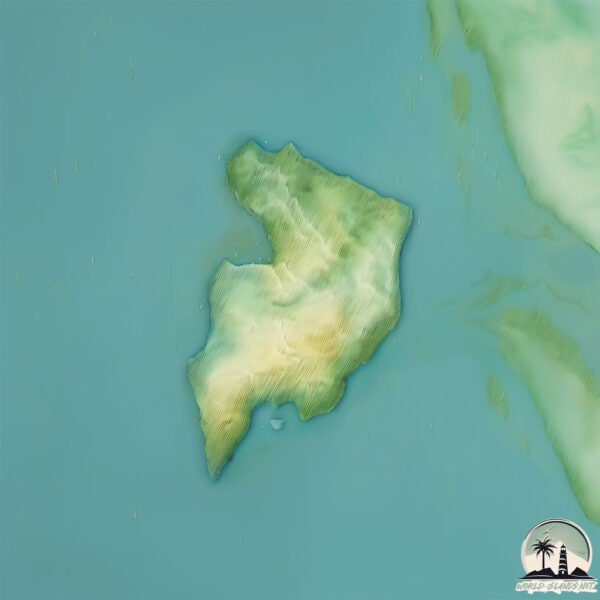Welcome to Channel Island , a Tropical island in the Timor Sea, part of the majestic Indian Ocean. This guide offers a comprehensive overview of what makes Channel Island unique – from its geography and climate to its population, infrastructure, and beyond. Dive into the details:
Geography and size of Channel Island
Size: 1.133 km²Coastline: 5.8 kmOcean: Indian OceanSea: Timor SeaContinent: Oceania
Channel Island is a Small Island spanning 1.1 km² with a coastline of 5.8 km.
Archipel: –
Tectonic Plate: Somalia – A large tectonic plate covering the Horn of Africa and parts of the Indian Ocean, known for the East African Rift where it’s splitting away from the African Plate.
The geographic heart of the island is pinpointed at these coordinates:
Climate and weather of Channel Island
Climate Zone: TropicalClimate Details: Tropical Savanna, WetTemperature: Hot
Climate Characteristics: Defined by distinct wet and dry seasons with high temperatures year-round. Pronounced rainfall occurs during the wet season, while the dry season is marked by drought.
Topography and nature of Channel Island
Timezone: UTC+09:30Timezone places: Australia/AdelaideMax. Elevation: 6 m Mean Elevation: 6 mVegetation: Mangrove ForestTree Coverage: 5%
The mean elevation is 6 m. The highest elevation on the island reaches approximately 6 meters above sea level. The island is characterized by Plains: Flat, low-lying lands characterized by a maximum elevation of up to 200 meters. On islands, plains are typically coastal lowlands or central flat areas.
Dominating Vegetation: Mangrove Forest
Vegetation: 4 vegetation zones – Diverse Island
Infrastructure and Travelling to Channel Island
Does the island have a public airport? no .
Does the island have a major port? no .
The mean population of Channel Island is 0 per km². Channel Island is Uninhabited. The island belongs to Australia .
Continuing your journey, Indian is the next notable island, situated merely km away.
Channel Islands National Park 101: Essential Tips for First-Time Visitors
Channel Islands National Park is a true gem of the Californian coast, and in this video, we're here to help first-time visitors make ...
Channel Islands National Park 101: Essential Tips for First-Time Visitors
Channel Islands National Park is a true gem of the Californian coast, ...
Channel Islands National Park is a true gem of the Californian coast, and in this video, we're here to help first-time visitors make ...
ONE Day at Channel Islands National Park- Santa Cruz Island -PLUS- Helpful Travel Info for You!
We are Travel SzN! Stoof, Nate, and our pups Duke and Zoro welcome you ...
We are Travel SzN! Stoof, Nate, and our pups Duke and Zoro welcome you to our channel! CHANNEL ISLANDS HELPFUL LINKS ...
Channel Islands, 1940: When The Nazis Invaded England | Hitler's England | Timeline
Hitler's England tells the story of the British Channel Islands under ...
Hitler's England tells the story of the British Channel Islands under German occupation from 1940 to 1945. There was ...
Australia is classified as Developed region: nonG7: Developed economies outside of the Group of Seven, characterized by high income and advanced economic structures. The level of income is High income: OECD.
News – Latest Updates and Headlines from Channel Island
Stay informed with the most recent news and important headlines from Channel Island. Here’s a roundup of the latest developments.
Loading...
Please note: The data used here has been primarily extracted from satellite readings. Deviations from exact values may occur, particularly regarding the height of elevations and population density. Land area and coastline measurements refer to average values at mean high tide.

